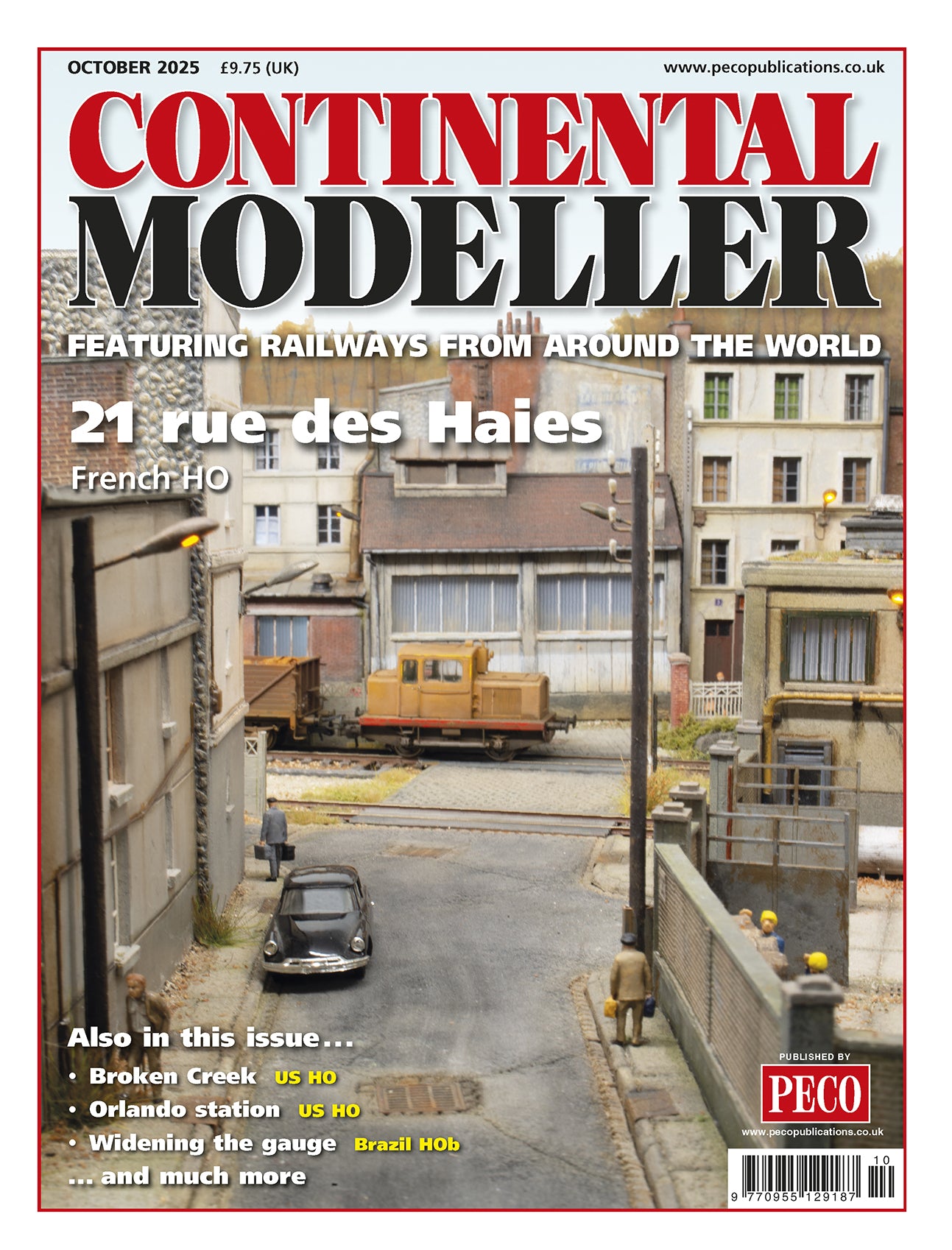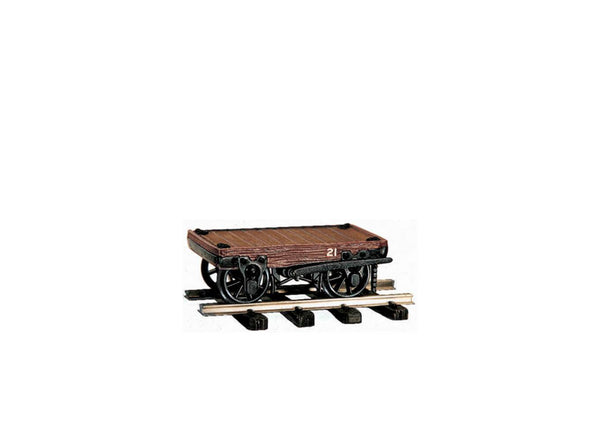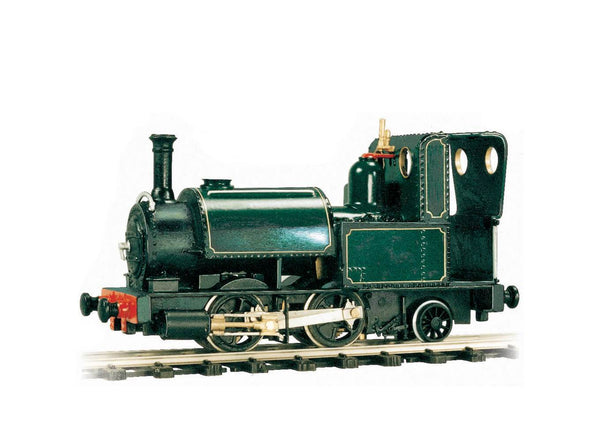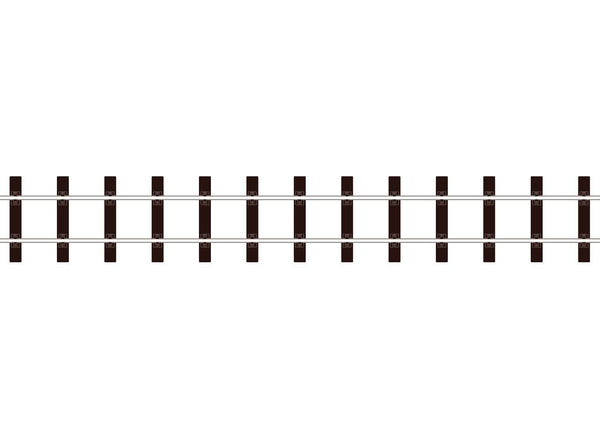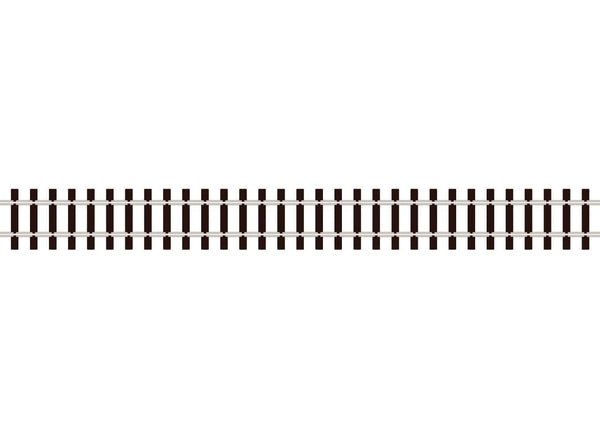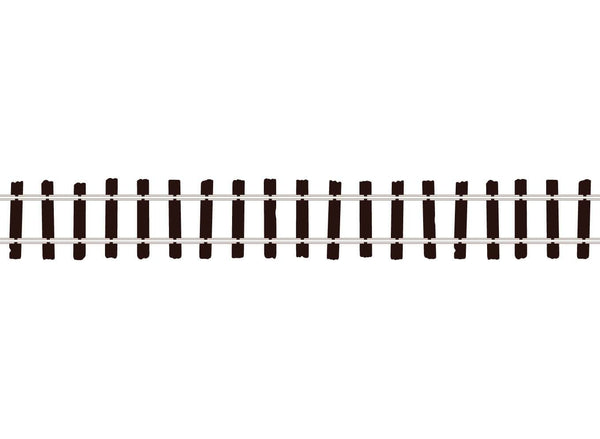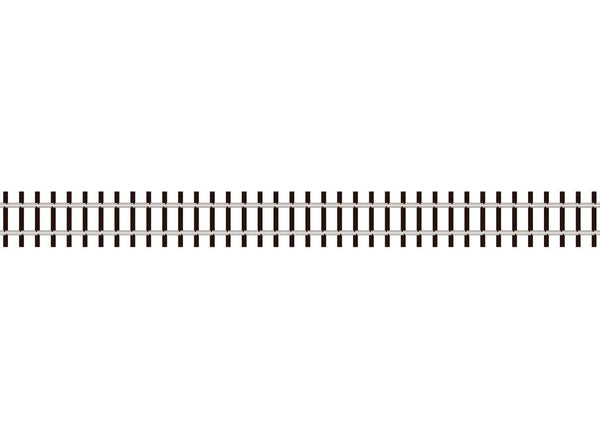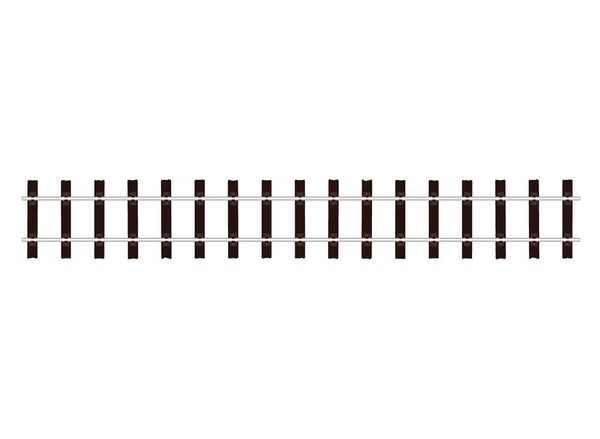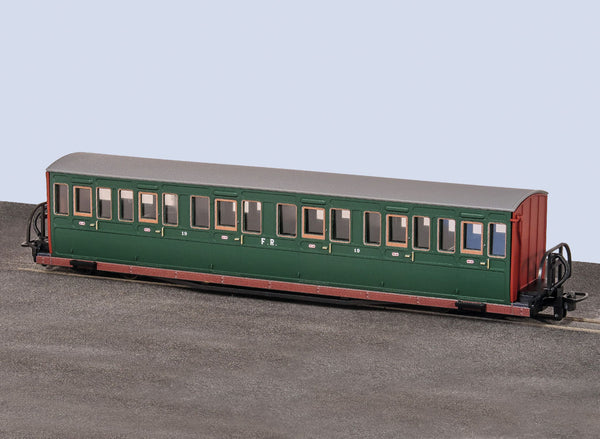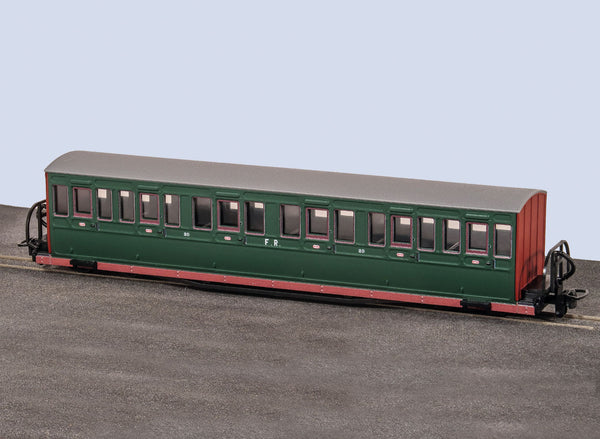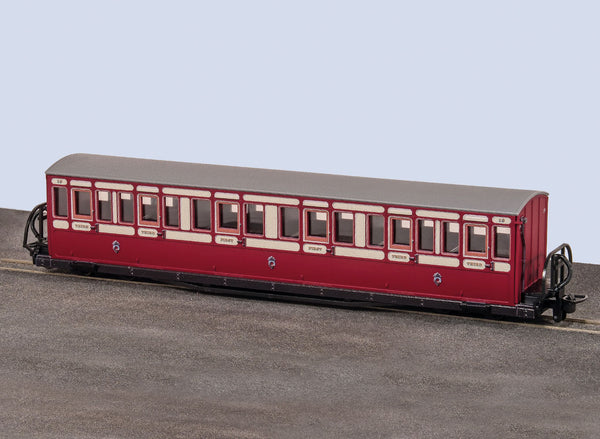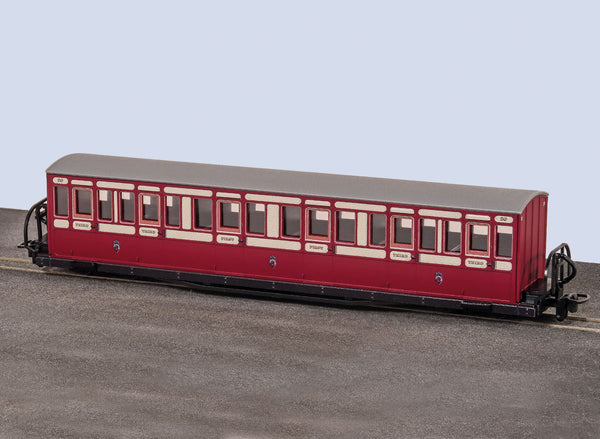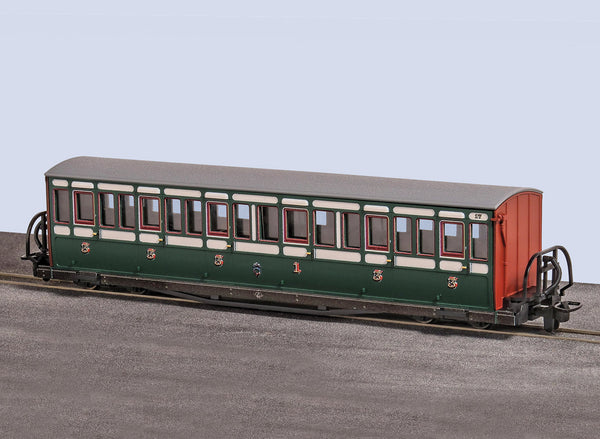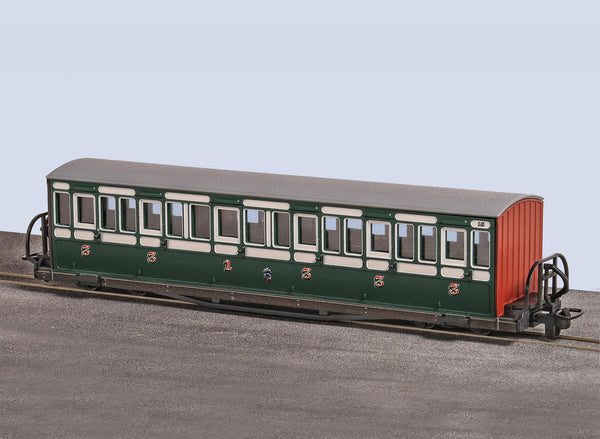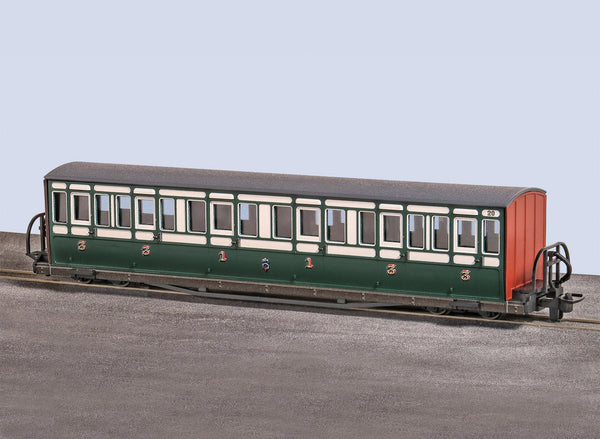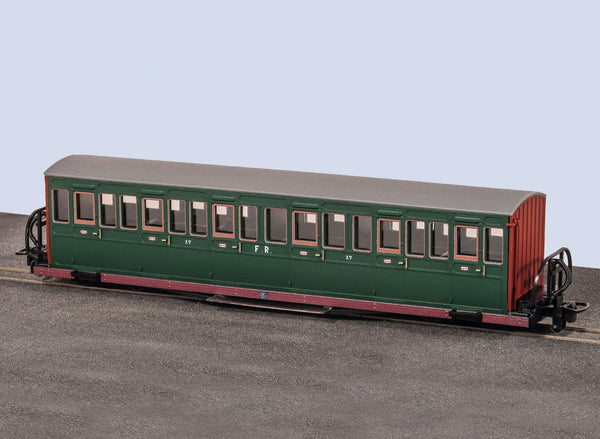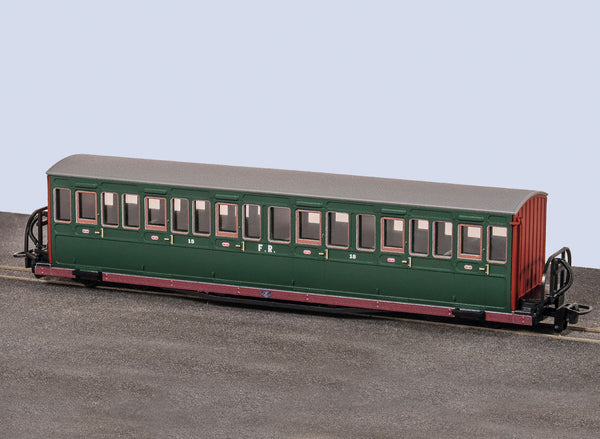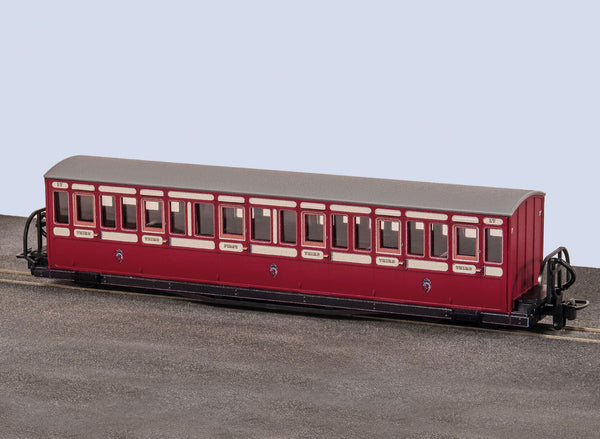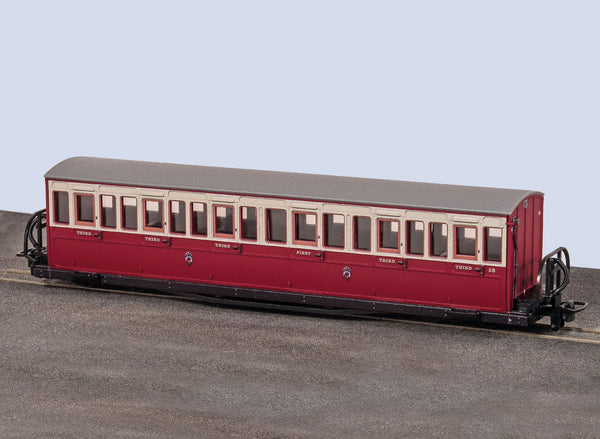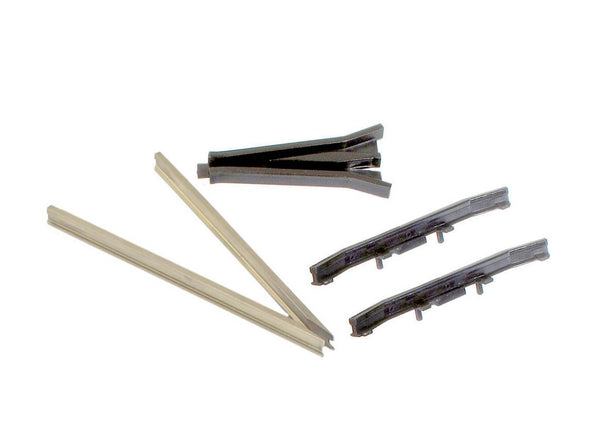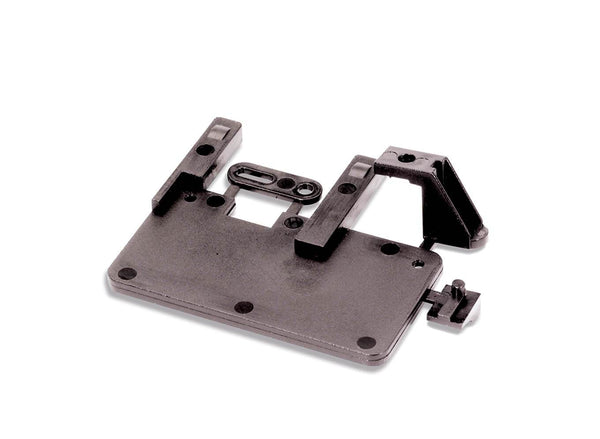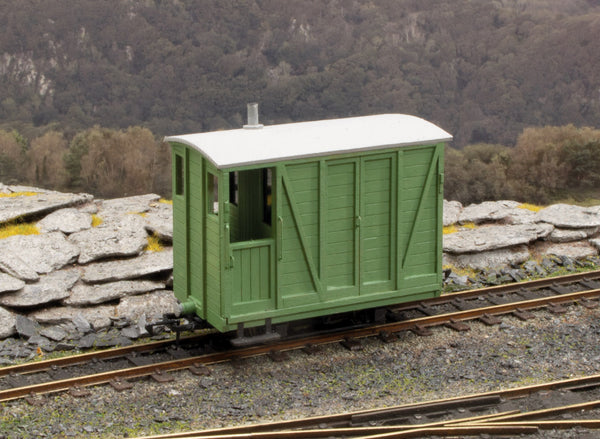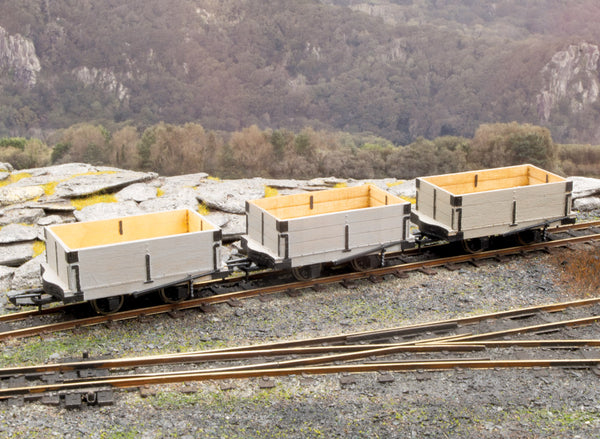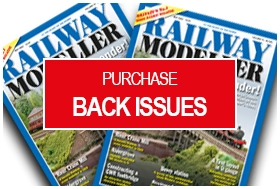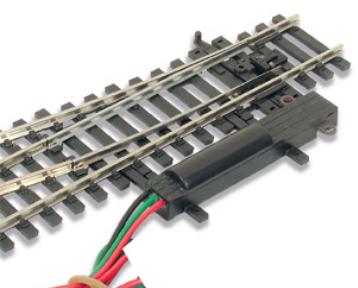DURCHSUCHEN SIE PECO-PRODUKTE
Stöbern Sie durch unser komplettes Produktportfolio.
311 Products Found
Ffestiniog und Blaneau Rly Planked 4-Rad-Wagen 1./2. Klasse
Diese fein geformten Wagenbausätze aus Kunststoff werden komplett mit Rädern mit punktförmiger Achse geliefert. Es werden Kleber und Farbe sowie entsprechende Abziehbilder benötigt.
Ffestiniog und Blaneau Rly Planked 3. Klasse-4-Rad-Reisebus
Diese fein geformten Wagenbausätze aus Kunststoff werden komplett mit Rädern mit punktförmiger Achse geliefert. Es werden Kleber und Farbe sowie entsprechende Abziehbilder benötigt.
Ffestiniog Rly 2ton Schieferwagen mit Stahlseiten
Diese fein geformten Wagenbausätze aus Kunststoff werden komplett mit Rädern mit punktförmiger Achse geliefert. Es werden Kleber und Farbe sowie entsprechende Abziehbilder benötigt.
Ffestiniog Rly offener 4-Rad-Hudson-Wagen mit Stahlkarosserie
Diese fein geformten Wagenbausätze aus Kunststoff werden komplett mit Rädern mit punktförmiger Achse geliefert. Es werden Kleber und Farbe sowie entsprechende Abziehbilder benötigt.
Ffestiniog Rly Bogie Coach
Diese fein geformten Wagenbausätze aus Kunststoff werden komplett mit Rädern mit punktförmiger Achse geliefert. Es werden Kleber und Farbe sowie entsprechende Abziehbilder benötigt.
Ffestiniog Rly Bogie Gepäckwagen
Diese fein geformten Wagenbausätze aus Kunststoff werden komplett mit Rädern mit punktförmiger Achse geliefert. Es werden Kleber und Farbe sowie entsprechende Abziehbilder benötigt.
Ffestiniog Rly Goods Bremswagen
Diese fein geformten Wagenbausätze aus Kunststoff werden komplett mit Rädern mit punktförmiger Achse geliefert. Es werden Kleber und Farbe sowie entsprechende Abziehbilder benötigt.
Ffestiniog Rly Granitwagen
Diese fein geformten Wagenbausätze aus Kunststoff werden komplett mit Rädern mit punktförmiger Achse geliefert. Es werden Kleber und Farbe sowie entsprechende Abziehbilder benötigt.
Ffestiniog Rly Granitwagen
Diese fein geformten Wagenbausätze aus Kunststoff werden komplett mit Rädern mit punktförmiger Achse geliefert. Es werden Kleber und Farbe sowie entsprechende Abziehbilder benötigt.
Ffestiniog Rly Semi Open Bogie Coach
Diese fein geformten Wagenbausätze aus Kunststoff werden komplett mit Rädern mit punktförmiger Achse geliefert. Es werden Kleber und Farbe sowie entsprechende Abziehbilder benötigt.
Ffestiniog Rly Schieferwagen
Diese fein geformten Wagenbausätze aus Kunststoff werden komplett mit Rädern mit punktförmiger Achse geliefert. Es werden Kleber und Farbe sowie entsprechende Abziehbilder benötigt.
Ffestiniog Rly Schieferwagen
Diese fein geformten Wagenbausätze aus Kunststoff werden komplett mit Rädern mit punktförmiger Achse geliefert. Es werden Kleber und Farbe sowie entsprechende Abziehbilder benötigt.
Ffestiniog Rly Standard-Drehgestellwagen
Diese fein geformten Wagenbausätze aus Kunststoff werden komplett mit Rädern mit punktförmiger Achse geliefert. Es werden Kleber und Farbe sowie entsprechende Abziehbilder benötigt.
Flachwagen 2 Tonnen
Weißmetallbausatz eines typischen Fahrzeugs basierend auf dem walisischen Schmalspurfahrzeug aus der Blütezeit der Schieferverkehrsära. (Kupplungen, Farbe und Transfers nicht im Lieferumfang enthalten).
Fletcher Jennings Saddle Tank Body
Ein hervorragender 0-16,5-Karosseriebausatz aus Weißmetall dieser berühmten Tallylyn-Lokomotive. Die gelieferten Komponenten umfassen zahlreiche Details, einschließlich der Kabinenausstattung. Fahrgestell derzeit nicht verfügbar.
Flexible Gleis-Unregelmäßigkeitsschwelle
Für Schmalspurmodelle im Maßstab 00 (4 mm) oder H0 (3,5 mm), die auf Gleisen der Spurweite 9 mm laufen, stellt diese Serie die leicht abgenutzten alten Gleise einer malerischen alten Eisenbahn dar. Es ist vollständig kompatibel mit dem starren Schienensystem Peco 009 Setrack.
Flexible Hauptstreckenschwelle
Für Schmalspurmodelle, die entweder im Maßstab 00 (4 mm) oder H0 (3,5 mm) gebaut sind und auf Gleisen der Spurweite 9 mm fahren, emuliert diese Reihe viele Schmalspurstrecken in ganz Europa, die nach Hauptstreckenstandards gebaut sind. Es ist mit dem starren Schienensystem Peco 009 Setrack kompatibel.
Flexibles Gleis, Holzschwelle
SM-32-Modelle sind vor allem im Garten eine beliebte Größe. Sie haben einen Maßstab von 16 mm/Fuß und fahren mit einer Spurweite von 32 mm, was einer Eisenbahn mit einer Spurweite von zwei Fuß entspricht. SM-32 ist die erste Wahl für viele Schmalspur-Enthusiasten, die echte Dampflokomotiven per Funk steuern möchten. Die Größe der Lokomotiven bietet viel Platz für den Empfänger und die Steuerservos. Das SM-32 Streamline-Schienensystem ist mit dem SM-32 Setrack-System kompatibel.
Flexibles Gleis, Holzschwelle
Dieses 12-mm-Gleissystem ist in H0 genau nach dem Vorbild der in Europa, insbesondere in der Schweiz, verbreiteten Meterspurgleise gestaltet. Es ist auch nützlich für die Modellierung der 3 Fuß 6 Zoll langen Strecke, die im südlichen Afrika, Japan, Australien, Norwegen und Teilen Südamerikas zu finden ist; Im 4-mm-Maßstab entspricht die Spurweite den vielen Linien mit einer Spurweite von 3 Fuß, die früher in Irland und auf der Isle of Man zu finden waren. Diese vielseitige Schiene kann auch für den Modellbau im TT-Maßstab (3 mm/ft) verwendet werden.
Flexibles Gleis, Holzschwelle
Eine 16,5-mm-Spurweite im 7-mm-Maßstab ergibt einen äquivalenten Prototyp von 2 Fuß 4 Zoll, was sie zu einer beliebten Wahl für Modellbauer macht. Dieser Maßstab wird in den USA auch als 0n30 bezeichnet, da dies zu einer Prototyp-Spurweite von nahezu 30 Zoll führt. Viele Modellbauer sind der Meinung, dass dieser Maßstab/Lehre eine ideale Kombination von Maßstabsdetails auf relativ kleinem Raum ermöglicht.
Flexibles Gleis, Holzschwelle
Drei Fuß war die Spurweite, die amerikanische Eisenbahningenieure wählten, als sie vor der Aufgabe standen, Züge in voller Größe in bergiges Gelände zu befördern. Die passenden Weichen verfügen über unser neues, vielseitiges Unifrog-Design, das wie ein Electrofrog bedient, mit Strom versorgt und geschaltet werden kann oder bei Bedarf auch ohne Stromversorgung gelassen werden kann.
Flexibles Gleis, Holzschwelle
Für große Schmalspurmodelle auf 45-mm-Gleisen ist es für elektrisch angetriebene Modelle konzipiert, eignet sich aber auch hervorragend für den Betrieb funkgesteuerter Dampfzüge. Dank der robusten Konstruktion eignet es sich sowohl für den Innen- als auch für den Außenbereich. Kompatibel mit dem G45 Setrack-System.
FR Long 'Bowsider' Coach - Colonel Stephens No.19
The Ffestiniog Railway operated two pairs of bogie coaches numbered 17-20 and built by Brown Marshalls & Co and Gloucester Wagon Co. They were known as ‘Bowsiders’ because of the tumblehome shape of their sides. Numbers 17 and 18, built in 1876 are shorter with one 1st class compartment. Numbers 19 and 20, built in 1879 are longer with two 1st class compartments. All four are still in service on the Ffestiniog Railway today.
In the 1920s the elaborate liveries of the Victorian era were replaced with a simple scheme of green with red end panels. It became known as the ‘Colonel Stephens’ livery, after the General Manager of the Ffestiniog Railway from 1925 until his passing in 1931. The colour scheme was used until the end of passenger operations in 1939, sometimes alongside other colours such as yellow, in the mid 1930s.
Green with red ends was applied to carriage No.20 once again from 2005 until 2024, as depicted by GR-623B.
FR Long 'Bowsider' Coach - Colonel Stephens No.20
The Ffestiniog Railway operated two pairs of bogie coaches numbered 17-20 and built by Brown Marshalls & Co and Gloucester Wagon Co. They were known as ‘Bowsiders’ because of the tumblehome shape of their sides. Numbers 17 and 18, built in 1876 are shorter with one 1st class compartment. Numbers 19 and 20, built in 1879 are longer with two 1st class compartments. All four are still in service on the Ffestiniog Railway today.
In the 1920s the elaborate liveries of the Victorian era were replaced with a simple scheme of green with red end panels. It became known as the ‘Colonel Stephens’ livery, after the General Manager of the Ffestiniog Railway from 1925 until his passing in 1931. The colour scheme was used until the end of passenger operations in 1939, sometimes alongside other colours such as yellow, in the mid 1930s.
Green with red ends was applied to carriage No.20 once again from 2005 until 2024, as depicted by GR-623B.
FR Long 'Bowsider' Coach - Red & Cream No.19
The Ffestiniog Railway operated two pairs of bogie coaches numbered 17-20 and built by Brown Marshalls & Co and Gloucester Wagon Co. They were known as ‘Bowsiders’ because of the tumblehome shape of their sides. Numbers 17 and 18, built in 1876 are shorter with one 1st class compartment. Numbers 19 and 20, built in 1879 are longer with two 1st class compartments. All four are still in service on the Ffestiniog Railway today.
The red and cream livery was first applied to a rake of carriages in 1987 for the ‘Mountain Prince’ train service. Carriage 20 was the first Bowsider to appear in the livery.
Carriages 17 and 18 had cream applied to the full upper half of the carriage. 17 had the mouldings reinstated in 1990 as depicted by GR-602A. 18 continued to have cream across the upper half throughout its time in the scheme, as represented by GR-602B. Note the ‘Brown Marshalls & Co. Ltd’ builders plate printed on the ends of the carriage.
All four Bowsiders were repainted into historic liveries in the 2000s, but the red and cream colour scheme is still seen today on the more modern carriages
FR Long 'Bowsider' Coach - Red & Cream No.20
The Ffestiniog Railway operated two pairs of bogie coaches numbered 17-20 and built by Brown Marshalls & Co and Gloucester Wagon Co. They were known as ‘Bowsiders’ because of the tumblehome shape of their sides. Numbers 17 and 18, built in 1876 are shorter with one 1st class compartment. Numbers 19 and 20, built in 1879 are longer with two 1st class compartments. All four are still in service on the Ffestiniog Railway today.
The red and cream livery was first applied to a rake of carriages in 1987 for the ‘Mountain Prince’ train service. Carriage 20 was the first Bowsider to appear in the livery.
Carriages 17 and 18 had cream applied to the full upper half of the carriage. 17 had the mouldings reinstated in 1990 as depicted by GR-602A. 18 continued to have cream across the upper half throughout its time in the scheme, as represented by GR-602B. Note the ‘Brown Marshalls & Co. Ltd’ builders plate printed on the ends of the carriage.
All four Bowsiders were repainted into historic liveries in the 2000s, but the red and cream colour scheme is still seen today on the more modern carriages
FR Short 'Bowsider' Bogie Coach - Early Preservation - Green 17
FR Short 'Bowsider' Bogie Coach - Early Preservation - Green 18
FR Short 'Bowsider' Bogie Coach - Early Preservation - Green 19
FR Short 'Bowsider' Bogie Coach - Early Preservation - Green 20
FR Short 'Bowsider' Coach - Colonel Stephens No.17
The Ffestiniog Railway operated two pairs of bogie coaches numbered 17-20 and built by Brown Marshalls & Co and Gloucester Wagon Co. They were known as ‘Bowsiders’ because of the tumblehome shape of their sides. Numbers 17 and 18, built in 1876 are shorter with one 1st class compartment. Numbers 19 and 20, built in 1879 are longer with two 1st class compartments. All four are still in service on the Ffestiniog Railway today.
In the 1920s the elaborate liveries of the Victorian era were replaced with a simple scheme of green with red end panels. It became known as the ‘Colonel Stephens’ livery, after the General Manager of the Ffestiniog Railway from 1925 until his passing in 1931. The colour scheme was used until the end of passenger operations in 1939, sometimes alongside other colours such as yellow, in the mid 1930s.
Green with red ends was applied to carriage No.20 once again from 2005 until 2024, as depicted by GR-623B.
FR Short 'Bowsider' Coach - Colonel Stephens No.18
The Ffestiniog Railway operated two pairs of bogie coaches numbered 17-20 and built by Brown Marshalls & Co and Gloucester Wagon Co. They were known as ‘Bowsiders’ because of the tumblehome shape of their sides. Numbers 17 and 18, built in 1876 are shorter with one 1st class compartment. Numbers 19 and 20, built in 1879 are longer with two 1st class compartments. All four are still in service on the Ffestiniog Railway today.
In the 1920s the elaborate liveries of the Victorian era were replaced with a simple scheme of green with red end panels. It became known as the ‘Colonel Stephens’ livery, after the General Manager of the Ffestiniog Railway from 1925 until his passing in 1931. The colour scheme was used until the end of passenger operations in 1939, sometimes alongside other colours such as yellow, in the mid 1930s.
Green with red ends was applied to carriage No.20 once again from 2005 until 2024, as depicted by GR-623B.
FR Short 'Bowsider' Coach - Red & Cream No.17
The Ffestiniog Railway operated two pairs of bogie coaches numbered 17-20 and built by Brown Marshalls & Co and Gloucester Wagon Co. They were known as ‘Bowsiders’ because of the tumblehome shape of their sides. Numbers 17 and 18, built in 1876 are shorter with one 1st class compartment. Numbers 19 and 20, built in 1879 are longer with two 1st class compartments. All four are still in service on the Ffestiniog Railway today.
The red and cream livery was first applied to a rake of carriages in 1987 for the ‘Mountain Prince’ train service. Carriage 20 was the first Bowsider to appear in the livery.
Carriages 17 and 18 had cream applied to the full upper half of the carriage. 17 had the mouldings reinstated in 1990 as depicted by GR-602A. 18 continued to have cream across the upper half throughout its time in the scheme, as represented by GR-602B. Note the ‘Brown Marshalls & Co. Ltd’ builders plate printed on the ends of the carriage.
All four Bowsiders were repainted into historic liveries in the 2000s, but the red and cream colour scheme is still seen today on the more modern carriages
FR Short 'Bowsider' Coach - Red & Cream No.18
The Ffestiniog Railway operated two pairs of bogie coaches numbered 17-20 and built by Brown Marshalls & Co and Gloucester Wagon Co. They were known as ‘Bowsiders’ because of the tumblehome shape of their sides. Numbers 17 and 18, built in 1876 are shorter with one 1st class compartment. Numbers 19 and 20, built in 1879 are longer with two 1st class compartments. All four are still in service on the Ffestiniog Railway today.
The red and cream livery was first applied to a rake of carriages in 1987 for the ‘Mountain Prince’ train service. Carriage 20 was the first Bowsider to appear in the livery.
Carriages 17 and 18 had cream applied to the full upper half of the carriage. 17 had the mouldings reinstated in 1990 as depicted by GR-602A. 18 continued to have cream across the upper half throughout its time in the scheme, as represented by GR-602B. Note the ‘Brown Marshalls & Co. Ltd’ builders plate printed on the ends of the carriage.
All four Bowsiders were repainted into historic liveries in the 2000s, but the red and cream colour scheme is still seen today on the more modern carriages
Freiberuflicher Reisebus mit 2 Abteilen und 4 Rädern
Diese fein geformten Wagenbausätze aus Kunststoff werden komplett mit Rädern mit punktförmiger Achse geliefert. Es werden Kleber und Farbe sowie entsprechende Abziehbilder benötigt.
Freelance 4 Wheel Guards Van
Diese fein geformten Wagenbausätze aus Kunststoff werden komplett mit Rädern mit punktförmiger Achse geliefert. Es werden Kleber und Farbe sowie entsprechende Abziehbilder benötigt.
Freiberuflicher, getäfelter Allradwagen der 1. Klasse
Diese fein geformten Wagenbausätze aus Kunststoff werden komplett mit Rädern mit punktförmiger Achse geliefert. Es werden Kleber und Farbe sowie entsprechende Abziehbilder benötigt.
Freiberuflicher, getäfelter Allradwagen der 3. Klasse
Diese fein geformten Wagenbausätze aus Kunststoff werden komplett mit Rädern mit punktförmiger Achse geliefert. Es werden Kleber und Farbe sowie entsprechende Abziehbilder benötigt.
Freiberuflicher Einzelpolsterwagen
Diese fein geformten Wagenbausätze aus Kunststoff werden komplett mit Rädern mit punktförmiger Achse geliefert. Es werden Kleber und Farbe sowie entsprechende Abziehbilder benötigt.
Freeline 4-Rad-Chassis
Diese fein geformten Wagenbausätze aus Kunststoff werden komplett mit Rädern mit punktförmiger Achse geliefert. Es werden Kleber und Farbe sowie entsprechende Abziehbilder benötigt.
Frosch- und Check-Rail-Kit
1 Satz Frosch- und Flügelschienen für den Weichenbau unter Verwendung der Flachbodenschiene Code 250.
Montageplatte für Weichenmotoren im G-Maßstab
Ermöglicht den Einbau eines LGB(TM)-Motors in eine Peco G45-Weiche.
Glyn Valley Tramway 4ton Mineralwagen
Diese fein geformten Wagenbausätze aus Kunststoff werden komplett mit Rädern mit punktförmiger Achse geliefert. Es werden Kleber und Farbe sowie entsprechende Abziehbilder benötigt.
Glyn Valley Tramway 4ton Mineralwagen
Diese fein geformten Wagenbausätze aus Kunststoff werden komplett mit Rädern mit punktförmiger Achse geliefert. Es werden Kleber und Farbe sowie entsprechende Abziehbilder benötigt.
4-Rad-Wagenfahrgestell
0–16,5 Coach-Teile zur individuellen Anpassung der OR-31- und OR-32 Coach-Bausätze; auch für Selbstbauprojekte.
4-Rad-Wagenfahrgestell
0–16,5 Coach-Teile zur individuellen Anpassung der OR-31- und OR-32 Coach-Bausätze; auch für Selbstbauprojekte.
Hudson-Wagendrehgestelle aus den 1950er Jahren
Diese fein geformten Wagenbausätze aus Kunststoff werden komplett mit Rädern mit punktförmiger Achse geliefert. Es werden Kleber und Farbe sowie entsprechende Abziehbilder benötigt.
Offener Hudson-Wagen mit 4 Rädern und Holzkarosserie und 3 Planken
Diese fein geformten Wagenbausätze aus Kunststoff werden komplett mit Rädern mit punktförmiger Achse geliefert. Es werden Kleber und Farbe sowie entsprechende Abziehbilder benötigt.

